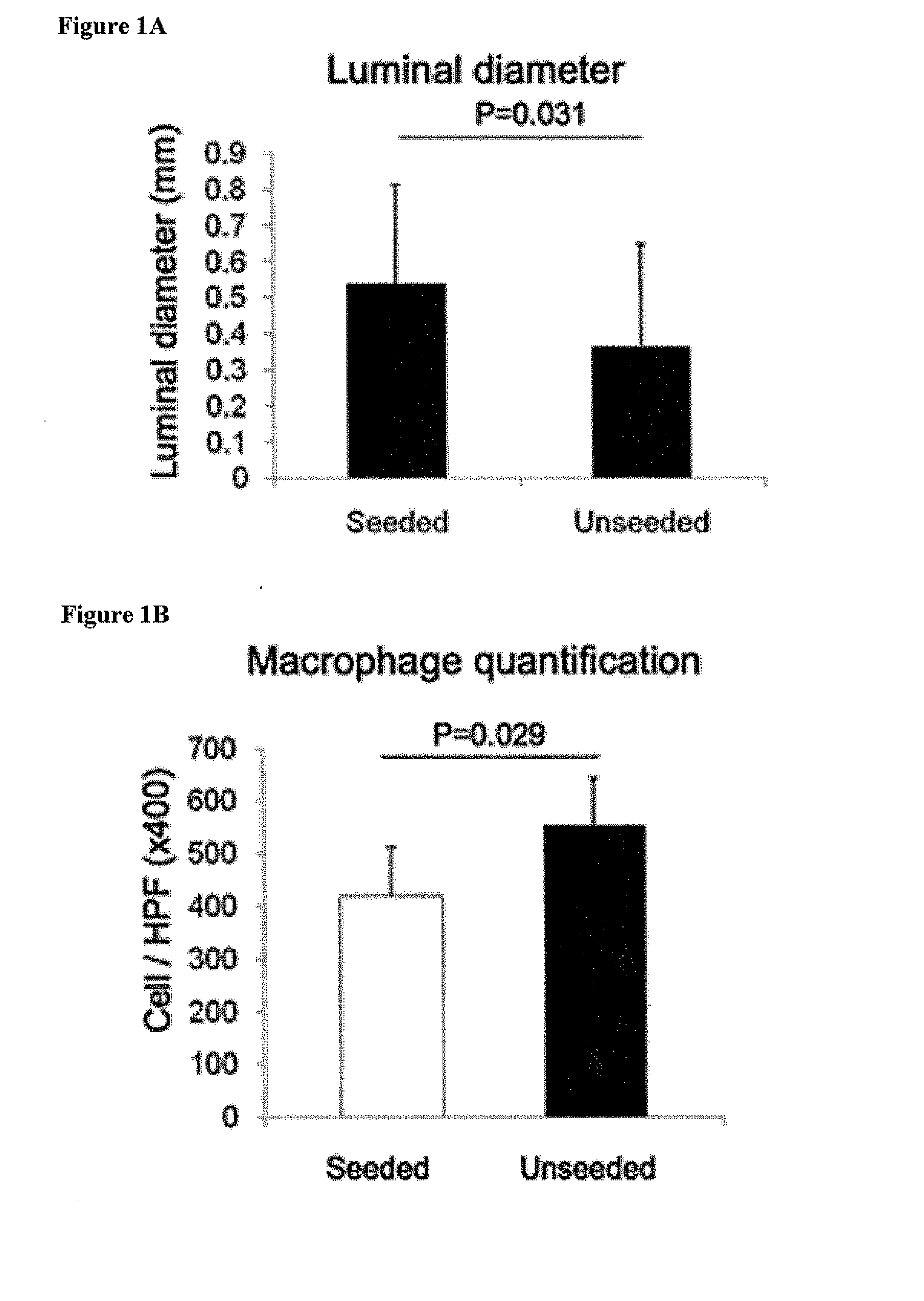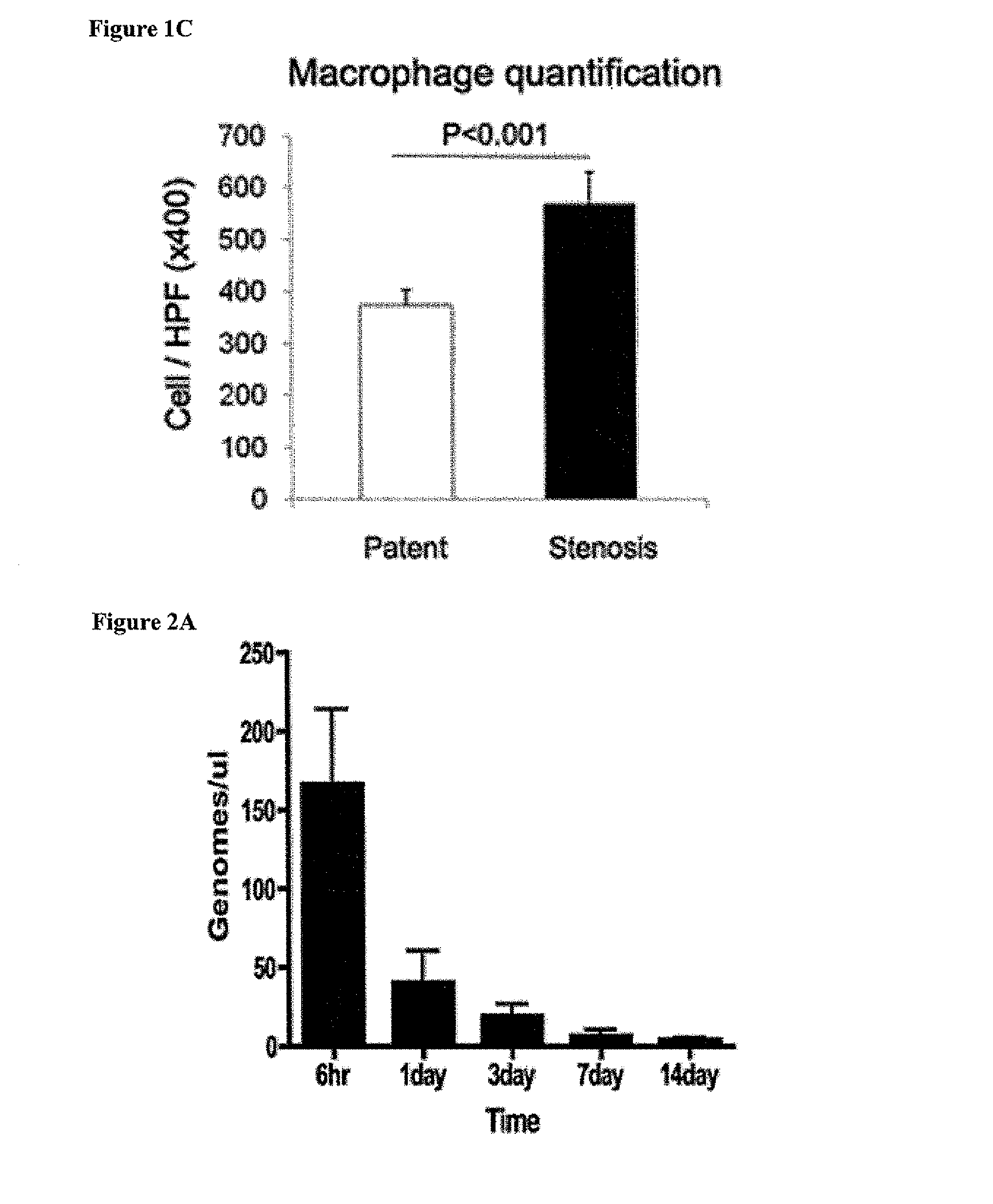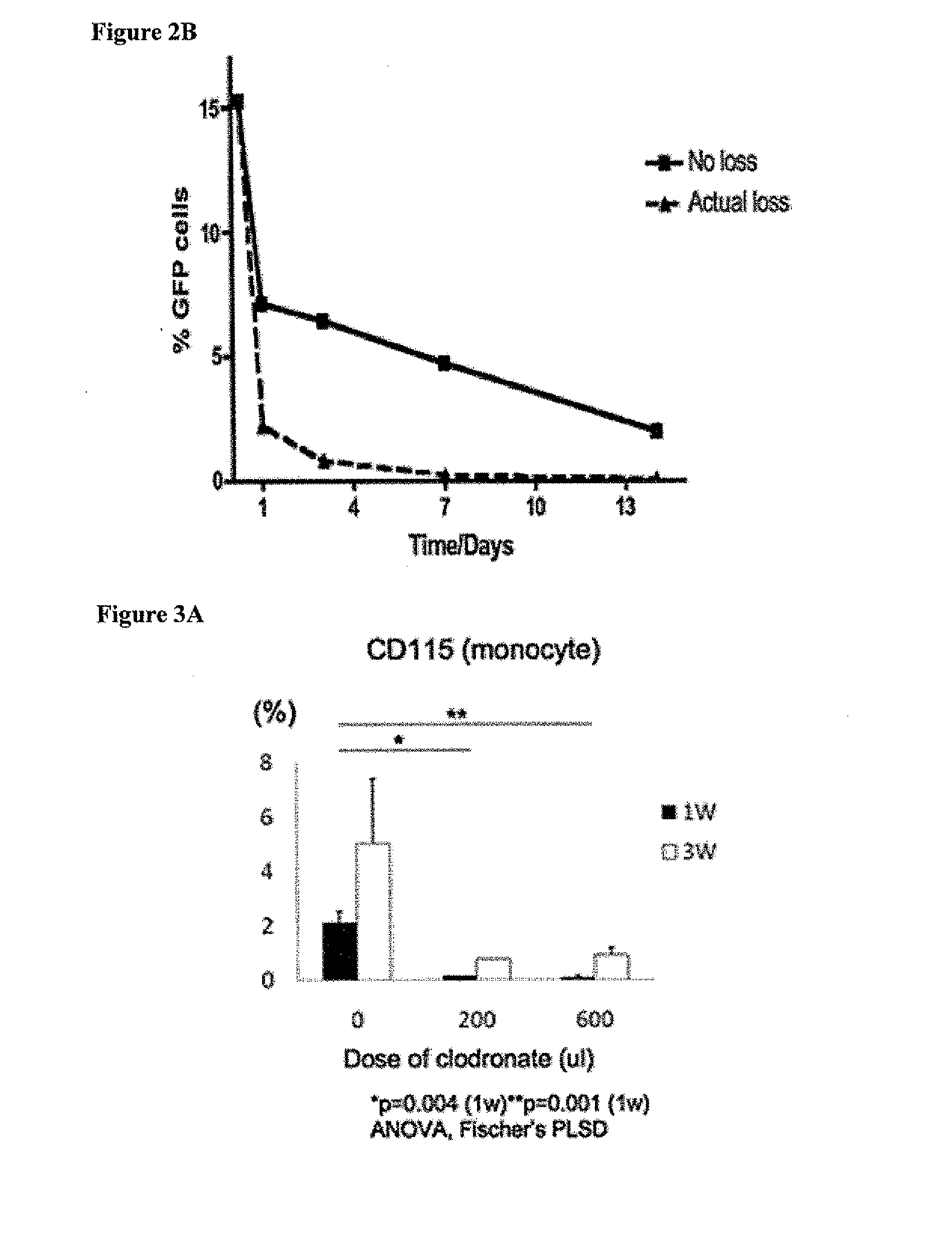Cell-Free Tissue Engineered Vascular Grafts
a cell-free, vascular graft technology, applied in the direction of prosthesis, antibody medical ingredients, phosphorous compound active ingredients, etc., can solve the problems of increased contamination risk, increased stenosis of vascular arteries, and increased vascular stenosis, so as to reduce graft stenosis and improve patency
- Summary
- Abstract
- Description
- Claims
- Application Information
AI Technical Summary
Benefits of technology
Problems solved by technology
Method used
Image
Examples
example 1
Murine Model of Neovessel Formation
[0112]A method for constructing small diameter biodegradable synthetic scaffolds were previously developed that are suitable for use as vascular grafts in mice (Roh, J. D., et al. Biomaterials 29:1454-1463 (2008)). These tubular scaffolds are composed of the same materials and design used in clinical TEVG, thus maintaining similar structural, mechanical, and degradation properties.
[0113]In this study, the natural history of TEVG function and neovessel formation was evaluated in the murine model. A total of 85 TEVG were implanted and harvested over the six-month time course. The results of implanting the TEVG created by seeding the scaffold with syngeneic bone marrow derived mononuclear cells as IVC interposition grafts was evaluated in CB57 / BL6 mice over a six-month course.
[0114]Most graft failure resulted from stenosis, which occurred by the second week after implantation. The CB57 / BL6 murine model faithfully recapitulates the results obtained in ...
example 2
Role of Cell Seeding in Neovessel Formation
Materials and Methods
[0116]CB57 / B16 IVC Interposition Model:
[0117]Scaffolds were constructed from a nonwoven polyglycolic acid (PGA) mesh (ConcordiaFibers) and a co-polymer sealant solution of poly-L-lactide and -ε-caprolactone (P(CL / LA)) using previously described methods (Roh, J. D., et al. Biomaterials 29:1454-1463 (2008)). Bone marrow was collected from the femurs of syngeneic CB57 / BL6 mice (Jackson Laboratories; Bar Harbor, Me.). Following purification of the mononuclear cell component using Histopaque-1086 (Sigma; Saint Louis, Mo.) centrifugation, one million mononuclear cells were manually pipetted onto the scaffold. The seeded scaffold was incubated in Dulbecco's Modified Eagle's Medium (Gibco; North Andover, Mass.) overnight prior to implantation. TEVG implantations in the mice were performed as previously described (Roh, J. D., et al. Biomaterials 29:1454-1463 (2008)). All scaffolds were sutured into the infrarenal IVC of 3-4 mont...
PUM
| Property | Measurement | Unit |
|---|---|---|
| diameter | aaaaa | aaaaa |
| molecular weight | aaaaa | aaaaa |
| molecular weight | aaaaa | aaaaa |
Abstract
Description
Claims
Application Information
 Login to View More
Login to View More - R&D
- Intellectual Property
- Life Sciences
- Materials
- Tech Scout
- Unparalleled Data Quality
- Higher Quality Content
- 60% Fewer Hallucinations
Browse by: Latest US Patents, China's latest patents, Technical Efficacy Thesaurus, Application Domain, Technology Topic, Popular Technical Reports.
© 2025 PatSnap. All rights reserved.Legal|Privacy policy|Modern Slavery Act Transparency Statement|Sitemap|About US| Contact US: help@patsnap.com



